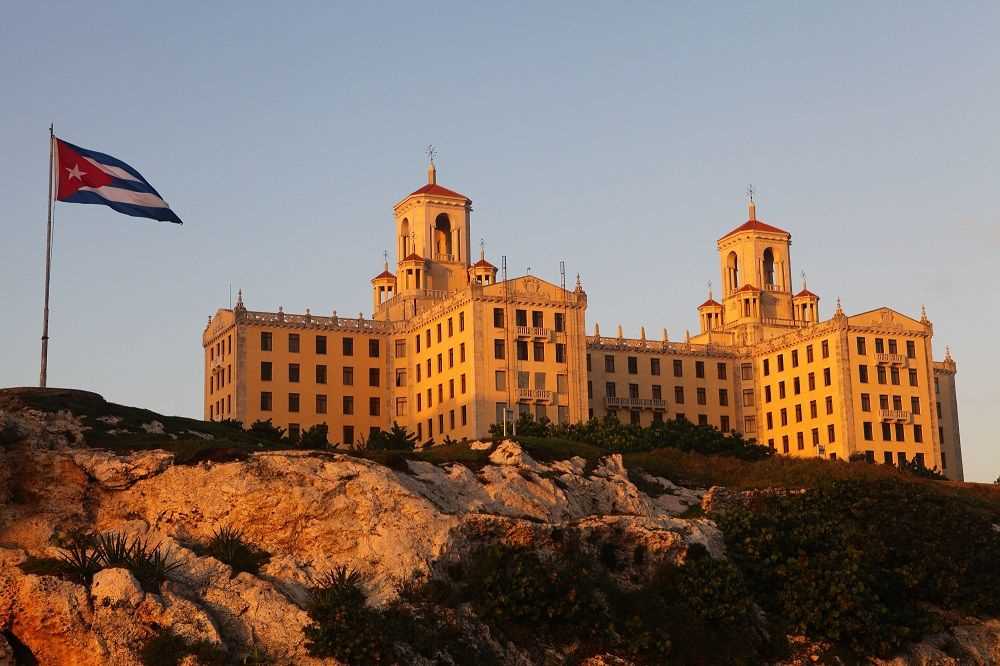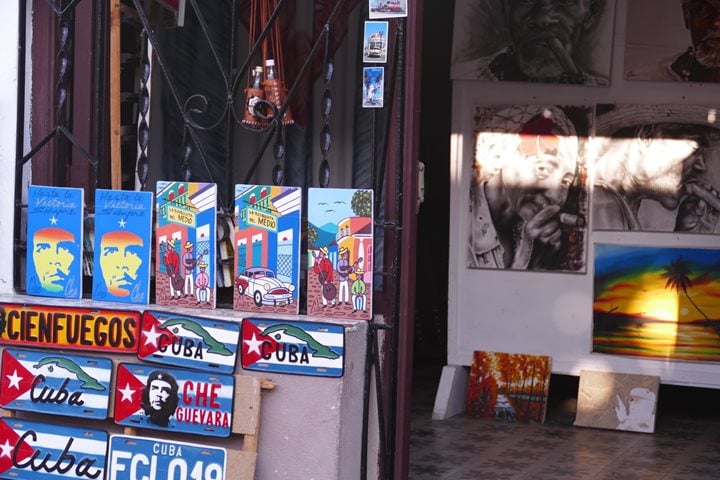Today, our first full day in Cuba, we awoke to a beautiful sunny day in Havana following a night of comfort at the stately 1930s-era Hotel Nacional, overlooking the Atlantic shoreline.
I began the day with a colorful and lively presentation—“Cuba 101: Land of Eccentricity and Enigma.” We then departed in two groups to explore Habana Vieja, the colonial core of this mesmerizing city, which in so many regards is a time-warp. Our walking tour through the cobbled plazas and streets revealed a lived-in historic quarter of profound interest as we strolled the heart of the four main plazas, interacting with many local people, santeros (adherents of the Afro-Cuban religion), attendants in state-run bodegas (ration stores), and cuentapropistas (self-employed), such as individuals extravagantly garbed as photo ops.
We ended in Plaza de la Catedral, with its astounding 18th-century baroque cathedral, and lunched on the shaded rooftop of La Moneda Cubana—a private restaurant serving exquisite criolla dishes, including fresh lobster, and ropa vieja (braised, marinated beef cooked with onions and peppers).
In the afternoon, one group visited the Partaga cigar factory, where they interacted with rollers and witnessed how the world’s finest cigars are produced. Then, on to the workshop of Nostalgicar, a private enterprise where owner Julio Álvarez explained how he has built a business restoring old Chevrolets for use serving as tourist run-arounds, including the hardships faced by Cubans in attempting to restore these vehicles in the face of shortages and a U.S. embargo.
The second group traveled out of town to Finca Vigía, the former home of Ernest Hemingway. Here, the museum’s specialist, Tatiana Gómez, led a guided tour and explained about Hemingway’s connect to the island and the home. Guests were fascinated by her regaling of anecdotes surrounding his colorful life of 21 years, when Cuba served as his home. This group then ventured to the fishing village of Cojímar, where Hemingway had berthed his sportfishing boat, Pilar.
In the afternoon we regrouped in the Hotel Nacional for an illuminating presentation on Cuba’s socioeconomic reforms and dependencies, given by renowned academic Jorge Mario Sánchez, a gifted speaker with a wry sense of humor.
We ended our sensational day with a tremendous dinner at La Barranca, the garden restaurant of the Hotel Nacional. Several guests savored fine cigars and rum on the patio bar before joining our guest lecturer and musicologist Jacob Edgar to the hottest multidimensional arts venue in town.







